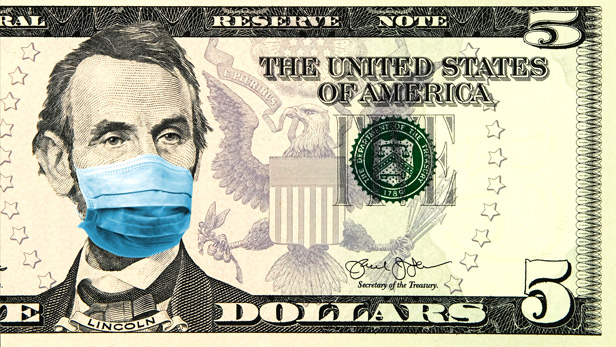News May 12, 2020
Experts Predict Slow Economic Recovery From COVID-19
Some forecasts say western countries like the United States won’t reach pre-pandemic economic activity until late 2021 or beyond.
There’s growing consensus among economists, policy makers and corporate leaders that the U.S. and global economies will not reach economic output levels experienced before the coronavirus pandemic any time soon.

Leaders had been hopeful that there would be a “V-shaped” recovery. That means that the economy would plummet amid shutdown measures, but then boomerang back up to pre-crisis levels once lockdowns lifted.
Now, as The Wall Street Journal reports, the expectation is that the recovery will be “swoosh-shaped.”
V, U, W? The economic recovery might actually resemble the Nike logo https://t.co/Z1VWwuuIFm via @PaulHannon29 @SaabiraC pic.twitter.com/evuYTvX6fU
— Georgi Kantchev (@georgikantchev) May 11, 2020
Named after the famous Nike logo, the swoosh-shaped recovery involves the precipitous decline in economic activity that the U.S. and other Western economies are currently experiencing, followed by a prolonged, slow recovery.
Under this model that is viewed as increasingly likely, the U.S. and Europe would not return to 2019 gross domestic product output ranges until late in 2021 or into 2022 – if not longer.
This forecast lines up with predictions that executives in the promotional products industry recently made to Counselor. They said that sales of traditional hard good promo products and branded apparel should start to see some bounce back in the third and fourth quarters of 2020. Still, many don’t expect anything near pre-crisis activity for a while.
When will the #promoproducts industry start to bounce back from #COVID19? What markets will be good to target? Who is buying now? Answers from leading industry executives here https://t.co/lFZ5mDxNM9 @asicentral @Tim_Andrews_ASI @ASI_MBell
— Chris Ruvo (@ChrisR_ASI) April 27, 2020
“While we ought to see signs of life later this year, it may be late 2021 before the promotional products industry returns to pre-crisis levels,” said Marc Simon, CEO of Sterling, IL-based HALO Branded Solutions (asi/356000), the third-largest distributor in the North American promo industry.
Brandon Mackay, CEO of West Jordan, UT-based Top 40 supplier SnugZ/USA (asi/88060), offered a similar analysis.
“I think interest in promo will return by the fourth quarter this year. I think there will be budgets to express thanks for the many employees who went above and beyond the call to make the best of what we’re going through now,” he said. Still, Mackay added: “When do I think spend on promo will resemble what we had in Q4 2019? I’d say Q4 2021 at the earliest.”
According to various analysts, policy makers and corporate executives, a slow recovery will happen for a variety of reasons. For one thing, lockdowns are taking longer than expected to be loosened.
When things do start to open up, there’s no immediate return to previous societal norms: Events like concerts and ball games remain out of the question, restaurants are limiting patrons, and many people are hesitant to venture out because of lingering health concerns. According to a survey by market research group Coresight Research, more than 70% of Americans expect to avoid some public spaces after shutdown restrictions ease.
Relatedly, high unemployment (nearly 15% in the U.S. as of this writing) and fear of job loss among the currently employed is likely to dampen consumer spending, which drives about 70% of GDP in the U.S.
Given such factors, the International Monetary Fund has predicted that U.S. GDP will decline nearly 6% in 2020. Deutsche Bank forecasts that the U.S. economy will nosedive by 7.1% this year. Economic activity won’t reach pre-COVID levels until 2022 or later, Deutsche Bank predicts.
“This is not going to be a quick recovery,” Mark Schneider, chief executive of Nestlé SA, the world’s biggest packaged foods maker, said in WSJ’s report. “This is going to be a several-quarter, if not several-year kind of process.”
